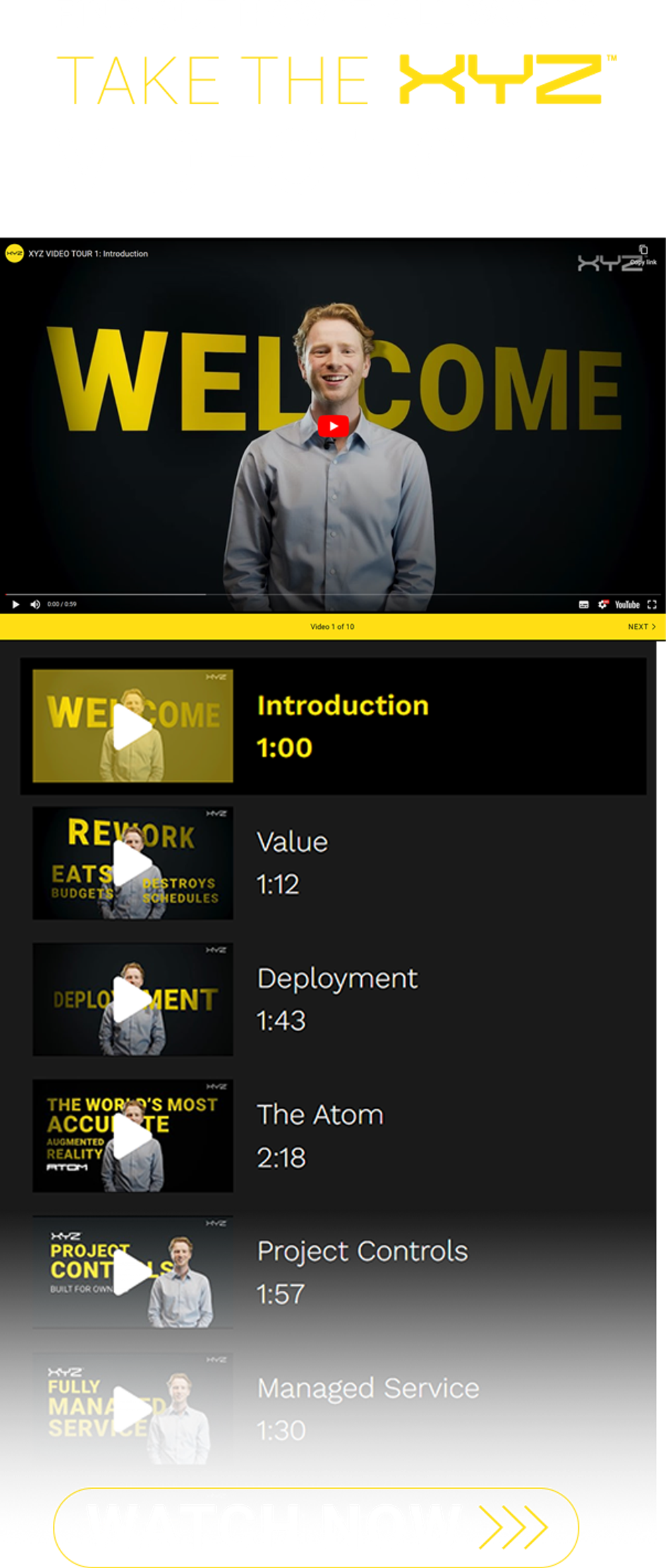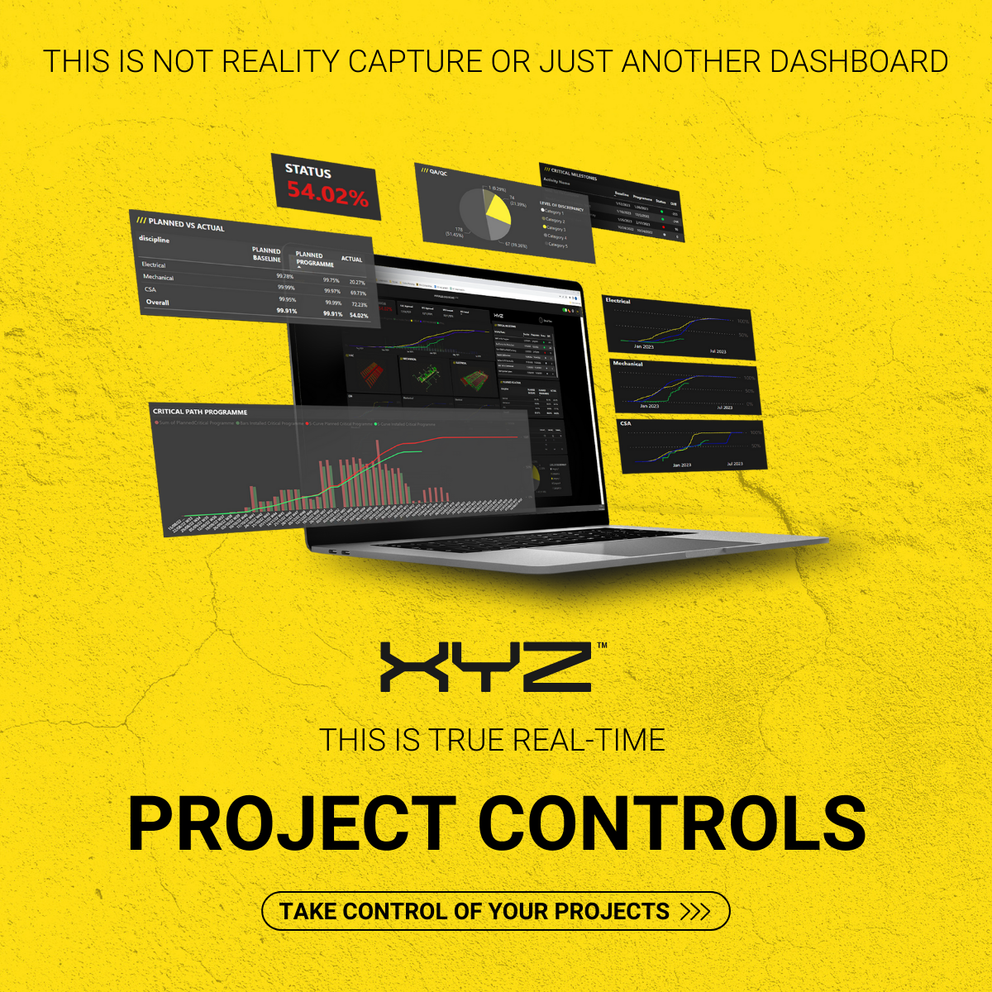-
Services
Services
Find out how we work with our clients and deliver value to construction projects from day one
-
Solutions
Solutions
Discover how all our solutions sync together to deliver construction's most powerful BIM platform to date
-
Built for
Built for
-
Industry
Industry
Understand how we support construction's biggest sectors, and hear from our clients who have experienced the power of XYZ
-
Resources
Resources
Get stuck into all our latest thought leadership, news, reports and industry leading content
-
Company
Company
Dive into what makes XYZ tick, unearth why construction is in our DNA and why we are world leaders in AR solutions

Insights
Connected construction technology: The key to project success
10 May 2024
As technology continues to evolve, XYZ Reality’s CTO, John Haddick, explains why integration is the key to transforming the construction industry.
It’s astounding to witness the speed at which technology is transforming the millennia old industry of construction. With recent advances in AI and ML, the pace is continuing to accelerate but there is still a critical component missing.
In their beginning, technologies like CAD, BIM, project management software, laser scanning, and wireless application protocols (A.K.A. smartphones) all represented giant leaps forward for the construction industry. And yet, a quarter of the way through the 21st Century, it now feels like these tools have only gradually evolved and already been around forever.
Today, there is an abundance of newer technologies which improve, and sometimes even supersede previous innovations – and they are coming to the fore at a rapid pace. Advances in AI, automation, robotics, and augmented reality (AR) are taking the industry to a new era by delivering projects more efficiently than ever before.
In isolation, each of these tools are amazing, but the secret to getting the most from these emerging tools lies in making them work in harmony. Connecting the input of one tool with the output of another, enables new levels of insights and coordination that were previously impossible to recognize before the commercial viability of Large Language Models and Machine Learning techniques.
The tools themselves are adept at detecting physical clashes and installation errors onsite, but when these tools are integrated with a connected AI Construction Platform, the synergy can provide profound insights. This integration can enhance planning and scheduling, pre-emptively identifying clashes and forecasting the potential domino effects of onsite errors. Deploying and integrating an AI Construction Platform at a global scale, lets the owners see a portfolio level view of their investments and live risk analysis of their projects to drive decisions down to the point of action.
When leveraged properly, connected construction technology has demonstrated measurable results in improved collaboration, massive efficiency gains, and smoother construction management across the stack, from the owners to the builders.
Synchronized construction technology: Integration unlocking tech’s potential
Despite some remarkable digital technology advancements in specific areas of construction over the last 20 years, they have been deployed in isolation and solved one problem at a time. Lack of connectivity and integration through common standards has often undermined the efficacy of digital construction tools and slowed further innovations in the market. Many of the anticipated benefits of smart technologies have been slow to materialize, often remaining in the evaluation phase due to inadequate integration or diminished in value by the manual processes required to transfer and connect data.
If crucial project data isn’t available to the right stakeholders; it can’t be properly applied to the decision-making process. In other words, invisible information offers the same value as no information whatsoever.
Thankfully, this lack of synchronization can now be addressed. Fragmented email chains, WhatsApp messages, spreadsheets and paper trails can be replaced by a centralized project management platform which ensures every stakeholder has access to comprehensive, real-time project updates.
Design changes, progress tracking, quality assessment reports, safety data and project documentation can all be fed into a single source of truth, accessible to diverse project teams of architects, contractors, suppliers and clients anywhere in the world. It’s all made possible through cloud computing and an integrated digital ecosystem.
Building Information Modelling – At the heart of connected construction
BIM sits at the heart of this new digital landscape. At its apex, BIM is more than just a 3D computer model, it’s a dynamic digital representation that reflects every facet of the built asset throughout its construction and operational lifespan. Sometimes referred to as the ‘digital twin’, this advanced approach to BIM depends on a two-way feed of data between the digital model and the physical reality, paving the way for simulations, monitoring and – in theory – even automated maintenance.
After initial design, the BIM process is only as good as the data that goes into it. And in the world of construction data, accuracy is everything. So, once again, we come back to the topic of integration, because to get accurate BIM data, you need connected technologies.
Leveraging BIM through integrated Engineering Grade Augmented Reality™ (AR)
The Atom™, the world’s most accurate Engineering Grade AR headset, takes the BIM onto the construction site, overlaying it against the physical, as-built, reality. The most accurate device for the construction market, the Atom, can display high-fidelity hyperscale models with 3-5 mm precision. In this regard, it is a supremely powerful validation tool because any deviation from the as-designed plan can instantly be spotted and addressed.
Through sophisticated data integration and analysis, the Atom becomes much more than a reactive validation or visualization tool and becomes a platform for predictive action. Through connections with existing solutions like the Autodesk Construction Cloud, users of the Atom can seamlessly share the results, insights, and hyper-accurate data with the wider project team, flag issues and request model updates linked to precise locations, or even assign tasks. This two-way flow of data brings new levels of rigour, efficiency, and real-time transparency to the construction process.
More than that, when deployed in the pre-installation phase, the Atom enables construction teams to work with complete accuracy and spot clashes before they arise. This ‘proactive validation’ concept has game-changing implications for the industry, cutting rework costs from as much as 30% to less than 1%.
Plus, the Atom’s real-time Project Controls capability adds another dimension to the project management process. Linking AR-enabled inspections to your BIM and project schedule, facilitating critical path management, and fostering total control over resource allocation.
Cultivating a culture of quality: Connected construction technology in action
The transformative impact of connected construction technology is no longer just a nice theory – projects everywhere are being delivered on time, on budget, and with higher levels of quality. This is all thanks to ConTech integration, which enables improved collaboration, efficiency gains and greater control over construction management.
On a recent 30-megawatt data center build in Europe, the client reported that integration between XYZ’s the Atom and Autodesk BIM 360 helped turn the project from a ‘major concern’ into one of their ‘greatest successes’. In this case, connected technology improved issue management threefold, leading to a 210% increase in pre-emptive identification of clashes.
With improved integration, we are not just seeing incremental gains, we’re witnessing the redefinition of what is possible in project management. This evolution goes beyond merely enhancing efficiency and collaboration. It's about fundamentally changing the landscape of construction - introducing a new era where precision, real-time visibility and absolute quality are not merely goals, but standard daily practices.
To find out more about the real-world impact of connected construction technology, read our case study: The power of early discovery: How a data center owner saved $1.55m in project costs.
Experience the power of the Atom for yourself. Request a demo today and see how the Atom can revolutionize your construction process.







